This post contains affiliate links, which means I may earn a commission if you purchase through those links (at no extra cost to you).
I grew up making Orange Marmalade the old-fashioned way: soaking citrus overnight and boiling it rigorously to extract the natural pectin in the rind. When you follow my technique, you don’t need to add any store-bought pectin, and you get the best, cleanest-tasting marmalade.
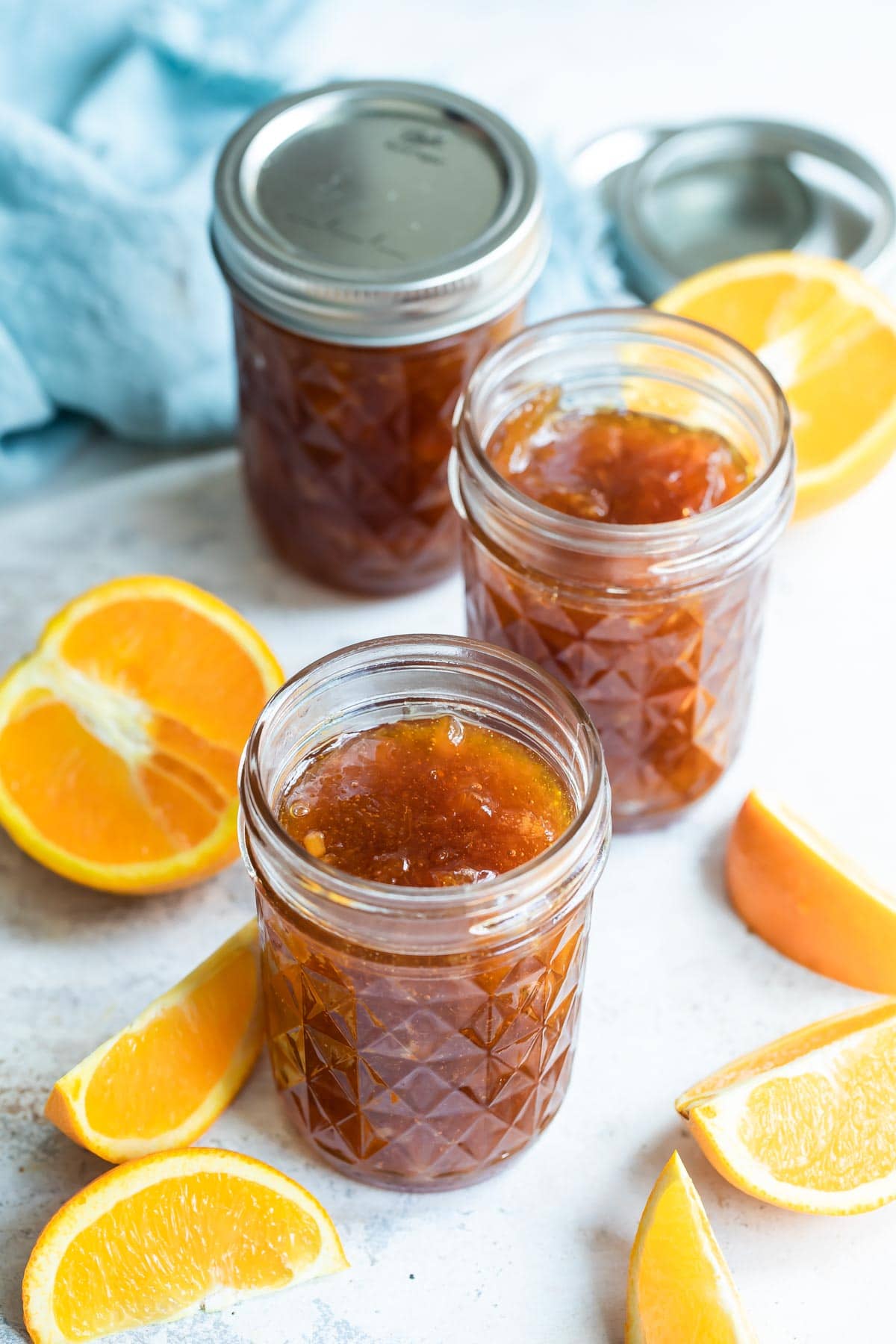
Nearly 1,000 5-star reviews prove this unfussy technique is simple and easy to follow. I also include my handy “cold plate test” so you can know for sure whether your marmalade is done or needs a little bit more time on the stove.
Home cooks everywhere are putting their abundant citrus to use to make their own homemade marmalade, and now you can, too. This recipe makes about 3 quarts total, or 12 (8 ounce jars). It freezes beautifully or you can process it in a water bath for canning.
Table of Contents
Marmalade Ingredients
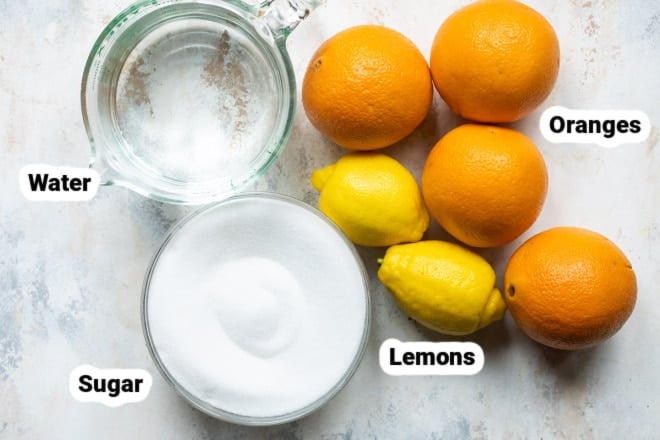
At a Glance: Here is a quick snapshot of what ingredients are in this recipe.
Please see the recipe card below for specific quantities.
- Oranges: This recipe is made with regular seedless oranges. You can definitely substitute Seville oranges if you can find them. They are only in season from the end of January to mid-February, but they have an intense flavor that is ideal for marmalade.
How to make Orange Marmalade
- Using a sharp knife, cut oranges and lemons in half crosswise, then into very thin half-moon slices. Discard any seeds. In a large pot (stainless steel), add the sliced oranges, lemons, and any fruit juice.
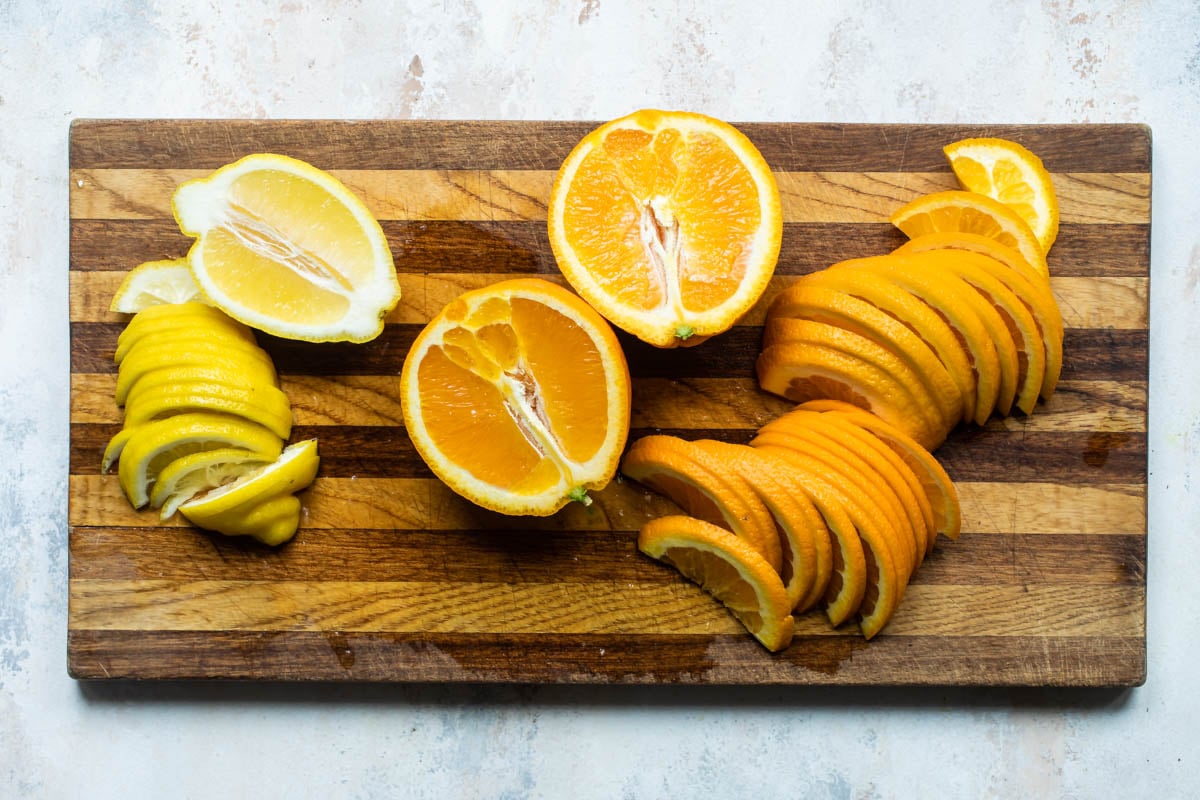
- Add water and bring the mixture to a boil over medium heat, stirring often. Remove from the heat and stir in the sugar until it dissolves. Cover and let stand overnight at room temperature.
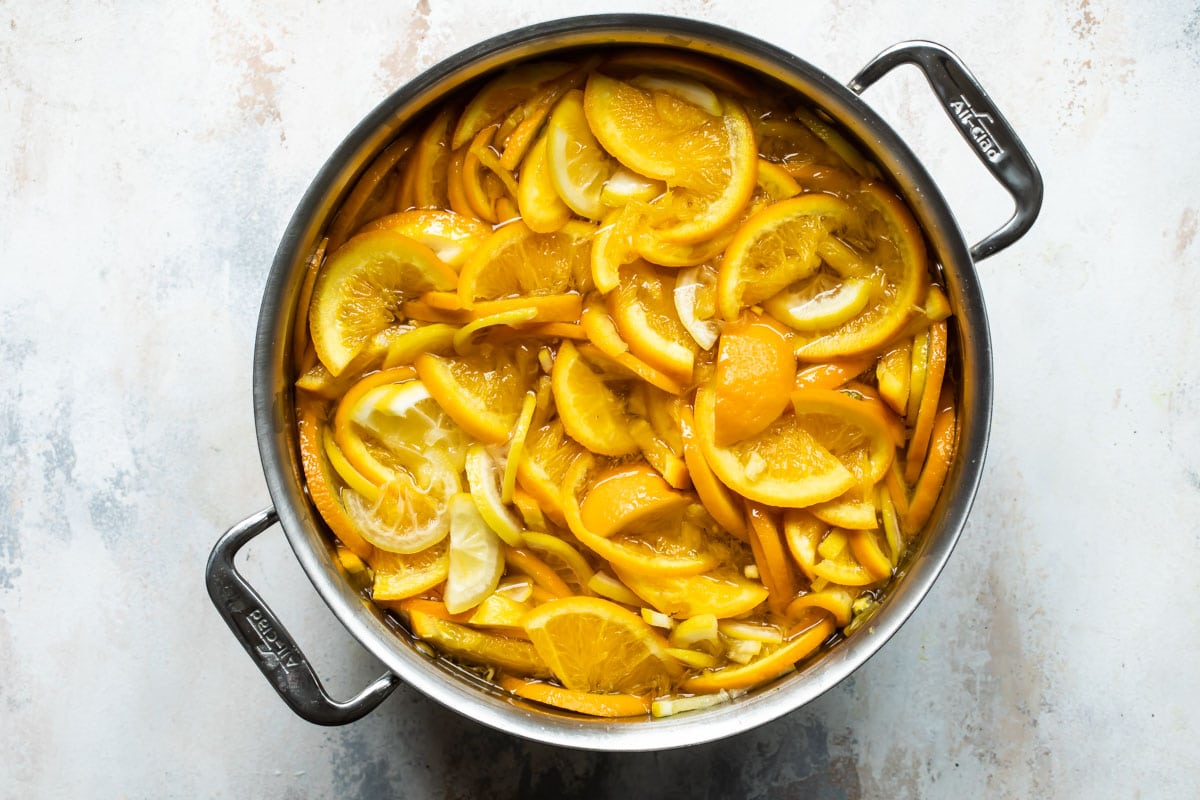
- The next day, bring the mixture back to a boil in the pot or saucepan. Reduce heat to low and simmer uncovered for 2 hours. Turn heat up to medium and boil gently, stirring often, for another 30 minutes. Skim off any foam that forms on the top. Cook until it reaches 220 degrees on a candy thermometer (you must hit this temperature for the natural pectin to gel with the sugar).
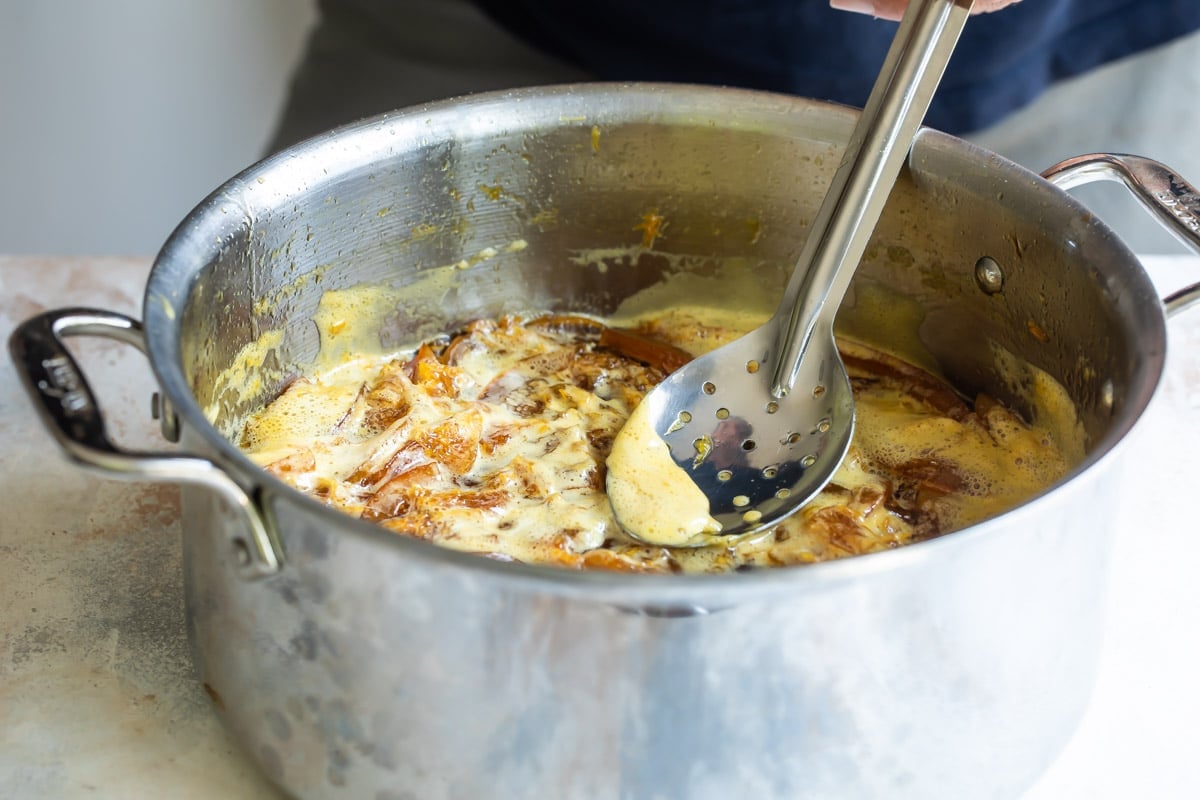
- To test if the marmalade is ready, place a small amount on a plate and refrigerate it until it’s cool but not cold. If it’s firm (neither runny nor hard), it’s ready. It will be a golden orange color. If it’s still runny, continue cooking it; if it’s hard, add a bit more water.
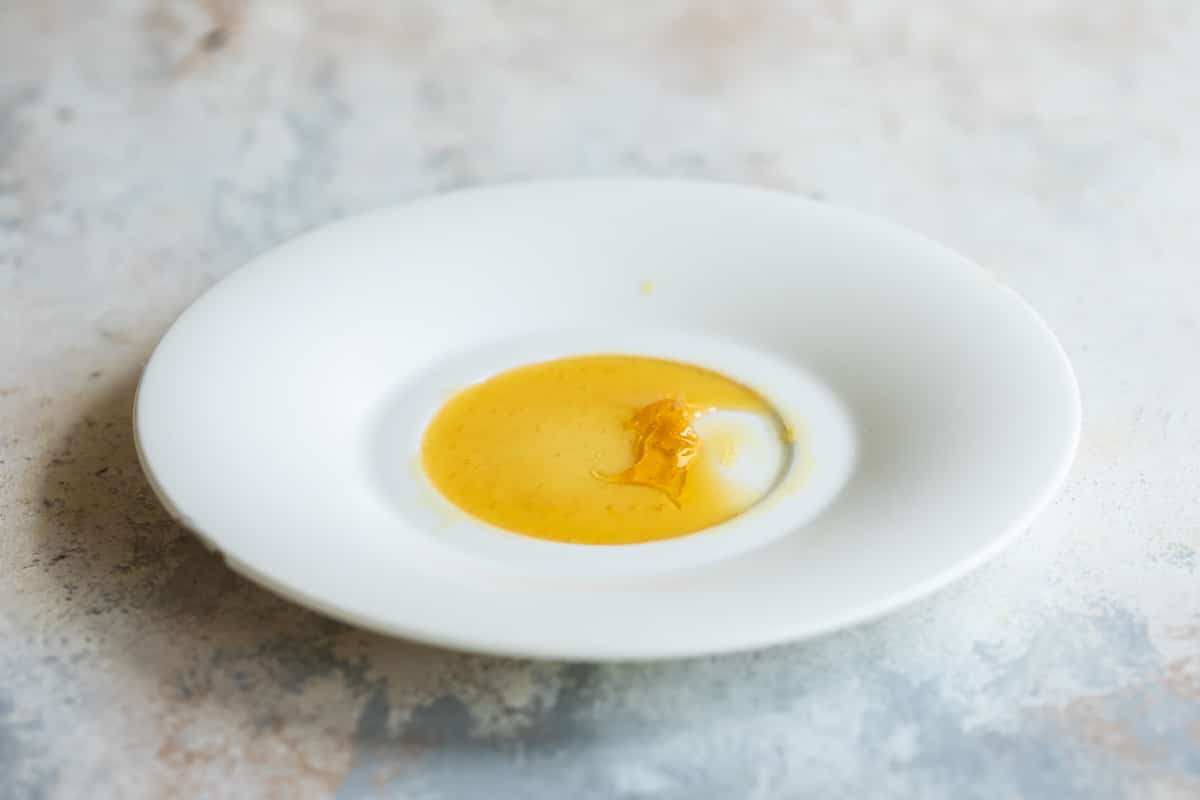
- Pour or ladle the marmalade into clean hot mason jars (I use this wide-mouth jar funnel for this recipe and so many others). Wipe the rims thoroughly with a clean damp paper towel, and seal with the lids. Chill in the refrigerator. It may take 24-48 hours for the natural pectin to set up properly.
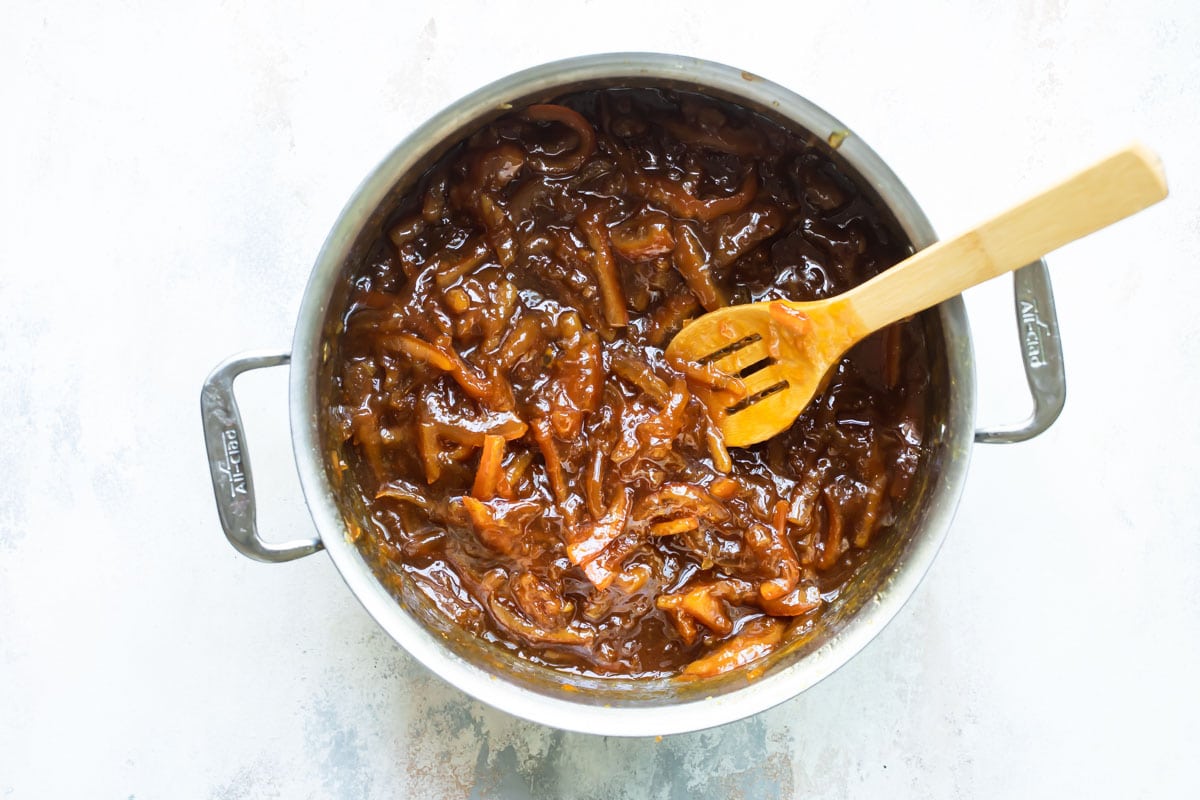
Orange Marmalade Recipe Variations
- Pectin: While many jam and jelly recipes require added pectin, you don’t need to add any here. Pectin is naturally concentrated in the pith of the orange (the bitter white part under the peel). This recipe coaxes out that natural pectin by letting the citrus soak overnight and then boiling it rapidly until enough water has evaporated that the mixture can reach 220 degrees.
- Agave nectar: Agave cannot penetrate and sweeten the peel as well as sugar can. When I tested it, the consistency was fine, but the rind tasted like raw rind. I don’t recommend this substitution.
- Low sugar: I haven’t tested low-sugar/alternative sweeteners in this recipe other than agave as listed above nor have I tweaked the amount of sugar in the recipe. I recommend seeking out recipes from experts in that area.
- Slow cooker: While it is technically possible to make marmalade in your slow cooker, it really depends on the power of your appliance. I no longer recommend that method because it isn’t reliable enough.
- Instant pot: Even with an overnight soak, the IP doesn’t break down the rind sufficiently. I don’t recommend this method.
Marmalade Recipe Tips
- Yield: This recipe makes about 3 quarts (96 ounces) of marmalade.
- If using 1/2-pint (8 ounce) jars, you’ll need 12.
- If using 1 pint (16 ounce) jars, you’ll need 6.
- If using the tiny jelly jars (4 ounce), you’ll need 24.
- Cold-plate test: To test if your marmalade is ready, spoon some hot marmalade on to a small plate and put it in the freezer to chill, or spoon some over an icy cold plate fresh from the freezer. If the mixture wrinkles slightly when you draw a spoon or finger across it, it has reached the setting point and is ready to go! If not, keep boiling and make sure the temperature reaches 220 degrees.
- Set-up time: Orange marmalade takes 24-48 hours for the natural pectin to set up completely. If it’s is still a little runny looking when it cools, check again in a day or two.
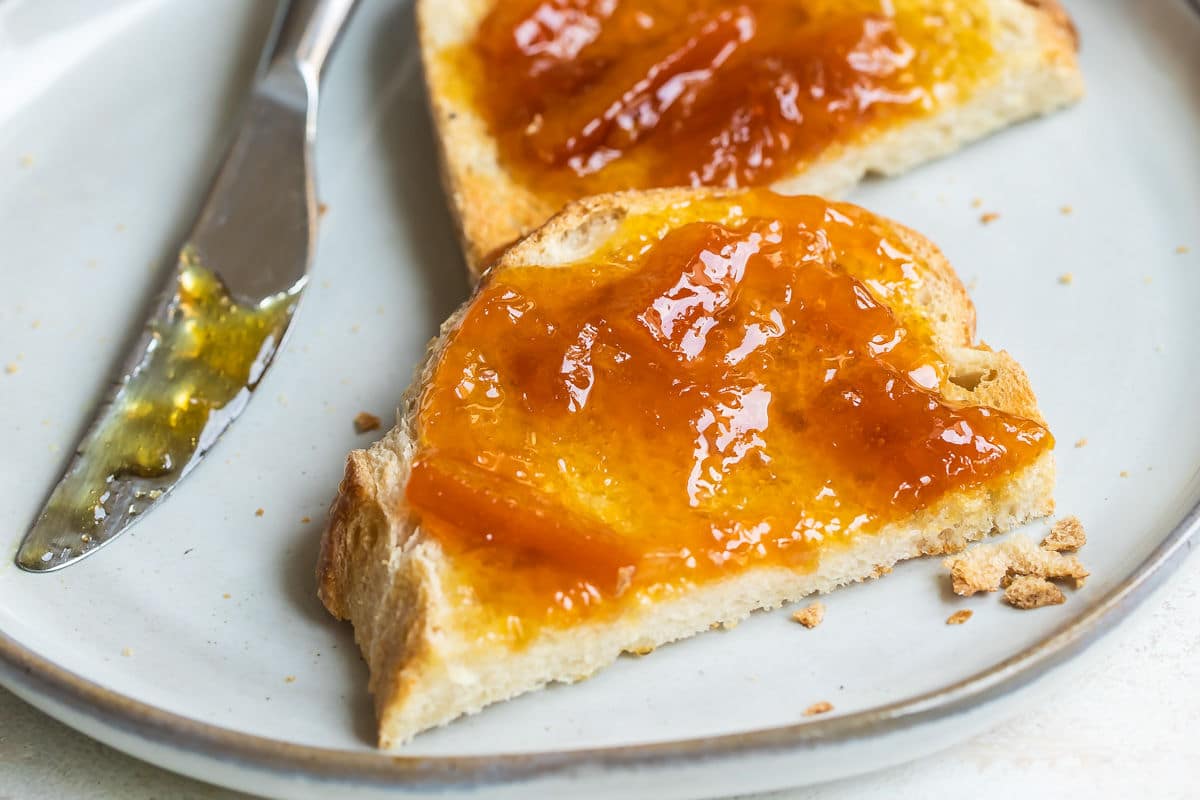
Storing and Canning Orange Marmalade
Storage: Store covered in the refrigerator for up to 1 month.
Freezer: Pack in freezer-safe containers or jars leaving 1/2-inch of headspace for expansion. Label, date, and freeze for up to 3 months. Thaw overnight in the refrigerator.
Canning: If putting up for storage, use a hot water or steam canner with a rack to properly seal lids on canning jars according to canning instructions. Otherwise, refrigerate and use within the month. Or, freeze for up to 3 months.
Frequently Asked Questions
Pectin is naturally concentrated in the pith of the orange (the bitter white part under the peel), so you don’t need to add any here. This recipe coaxes out that natural pectin by letting the citrus soak overnight and then boiling it rapidly until enough water has evaporated that the mixture can reach 220 degrees.
While it is technically possible to make marmalade in your slow cooker, it really depends on the power of your appliance. I no longer recommend that method because it isn’t reliable enough.
Even with an overnight soak, the IP doesn’t break down the rind sufficiently. I don’t recommend this method.
Agave cannot penetrate and sweeten the peel as well as sugar can. When I tested it, the consistency was fine, but the rind tasted like raw rind. I don’t recommend this substitution.
I don’t recommend making this recipe in a regular cast iron pan. It should be made in a non-reactive pan. Enameled cast iron, stainless steel, and non-stick are best and will not affect the color or taste of the marmalade
More fruit recipes
Pie and Tart Recipes
Fresh Fruit Tart
Fruit Dessert Recipes
Apple Crisp with Oatmeal
Cake Recipes
Lemon Bundt Cake Recipe
Muffins and Quick Breads
Banana Muffins
Join Us

Orange Marmalade
Equipment
- Jar funnel (for wide mouth jars)
Ingredients
- 4 large seedless oranges scrubbed clean (about 3 pounds or 8 cups slices, see note 1)
- 2 lemons (about ½ pound or 1 cup slices)
- 8 cups water
- 8 cups granulated sugar
Instructions
- Cut oranges and lemons in half crosswise, then into very thin half-moon slices. Discard any seeds. In a large stainless steel pot, add the sliced oranges, lemons, and any accumulated juices.
- Add water and bring the mixture to a boil, stirring often. Remove from the heat and stir in the sugar until it dissolves. Cover and let stand overnight at room temperature.
- The next day, bring the mixture back to a boil. Reduce heat to low and simmer uncovered for 2 hours. Turn heat up to medium and boil gently, stirring often, for another 30 minutes.
- Skim off any foam that forms on the top. Cook the marmalade until it reaches 220 degrees (you must hit this temperature for the natural pectin to gel with the sugar).
- To test if the marmalade is ready, place a small amount on a plate and refrigerate it until it's cool but not cold (see note 4). If it's firm (neither runny nor hard), it's ready. It will be a golden orange color. If the marmalade is runny, continue cooking it; if it's hard, add a bit more water.
- Pour the marmalade into clean hot mason jars; wipe the rims thoroughly with a clean damp paper towel, and seal with the lids. Chill in the refrigerator. It may take 24-48 hours for the natural pectin to set up properly.
Recipe Video
Notes
- Oranges: This recipe is made with regular seedless oranges. You can definitely substitute Seville oranges if you can find them. They are only in season from the end of January to mid-February, but they have an intense flavor that is ideal for marmalade.
- Yield: This recipe makes about 3 quarts (96 ounces) of marmalade.
- If using 1/2-pint (8 ounce) jars, you’ll need 12.
- If using 1 pint (16 ounce) jars, you’ll need 6.
- If using the tiny jelly jars (4 ounce), you’ll need 24.
- Storage: Store covered in the refrigerator for up to 1 month.
- Cold-plate test: To test if your marmalade is ready, spoon some hot marmalade on to a plate and put it in the freezer to chill, or spoon some over an icy cold plate fresh from the freezer. If the mixture wrinkles slightly when you draw a spoon or finger across it, it has reached the setting point and is ready to go! If not, keep boiling and make sure the temperature reaches 220 degrees.
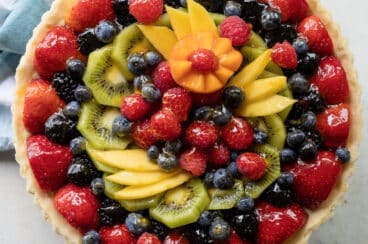

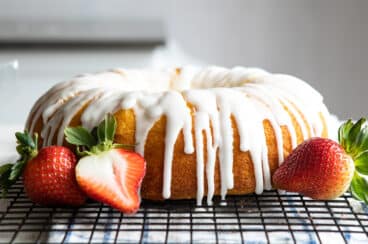
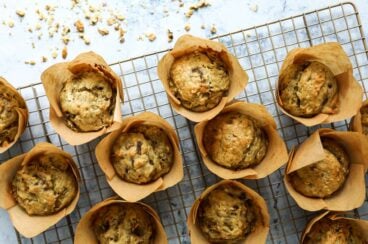
Hi Megan,
I’m so happy to report that yesterday I was able to use only 1/2 of the sugar (4 cups) and the recipe turned out great. I also used Sure Jell Low or No Sugar Pectin. My concern was adding the pectin and letting it sit overnight, but it worked great! I followed the recipe exactly except I removed 1/2 cup of the sugar and mixed it with the pectin before adding the mixture to the boiling fruit. After the pectin mixture dissolved, I added the rest of the sugar, as directed, and let it sit overnight. The next day, I brought it up to a boil, and then jarred it up. I did not have to cooked it for an additional 2 hours. I also loved the way you suggested to cut-up the fruit. That is so much easier than pealing the fruit, removing the pith, and slicing the fruit to remove the membrane around each section of the fruit. The marmalade turned out great. Thanks, Nancy Searle
Nancy, How much pectin did you use?
Hi. This recipe sounds lovely! Please could you tell me what size cup is used in this recipe. Is it a US cup measurement? Or a 250ml cup?
Hi Lisa! Sorry for taking so long to get back to you. It’s an American cup, about 8 ounces. Sorry for the confusion! Thanks. -Meggan
Hi Meggan,
Greetings from India! Making the marmalade as we speak. It smells and tastes super already. Boiled, added sugar and now wondering why I have to wait for 8 hours. I know im being impatient but would like to use it with Pork Chops tonight 🙂 .
I do hope I hear from you soon… I know, the time difference and all that but shall wait patiently for your reply.
Thank you.
Stay safe and well.
Hi Ambia! It’s my understanding that the waiting part has to do with getting the natural pectin to release from the orange peel.. but I’m not a food scientist. So, I’m going to make another batch and skip the waiting part, and see what happens. I wonder if it will still set up! I’ll reply back and let you know, and I’ll update the post with my findings. It’s a good question!!! I will see. 🙂 -Meggan
Trying first time today. Will the peels dissolve or will I need to remove before jarring up?
Hi Laura! Neither. The peels do not dissolve, but you don’t remove them either (if you have huge chunks from trimming the ends of the oranges, you can take those out). The peels become very sweet and the pith dissolves (that’s where the pectin is). And you just eat it like that. It tastes great, I make it all the time. I have 10 jars on hand at the moment. I hope you like it. If you have more questions, please let me know! Thanks. -Meggan
Thank you
I don’t understand how this recipe requires only FOUR oranges but makes 3 quarts?
Hi Margaret, it’s four large oranges which is about 3 pounds of oranges. And also 1/2 pound of lemons (2). And then you add in 8 cups of sugar. So, I guess that’s how it happens? On the surface it looks wrong, but it’s not. I made this just last week to double-check the yield because another reader wanted to know. Thanks! -Meggan
I have some home grown oranges which have quite a thick skin with large pith. Will these still work?
Hi Maria, I think so? I can’t imagine why not. The pith is what has the natural pectin in it which makes this whole thing work. And you cook it down significantly so I don’t think you’ll have an issue. Just make sure you cook it to 220 degrees as directed, and try the cold plate test. I think it will be great! I’m excited for you. I made this last week to count how many jars it fills (I got 12 8-oz jars BTW) and now I eat it every day. I just love it. I hope you like it too! Thanks. -Meggan
Is it possible to double the recipe? I know with jams and jellies it is not usually recommended but I have about 30lbs of oranges we were given!
Hi Rachel! Yes you should be fine! Just a question of if you have a pot big enough. 🙂 I use about 3 pounds of oranges in 1 batch. I see no issue with doubling it, it just might take a little longer to cook down. Make sure you always get it to 220 degrees, that’s the temperature that makes the pectin magic happen. I think you’ll be just fine. And also use the cold plate test method described in the recipe, just in case! That way you’ll know if you are having success. It’s a forgiving recipe, really hard to mess it up. Good luck! And wow you’re so lucky to get all those oranges!!! -Meggan
How did using half cane sugar and half brown sugar work for people who tried it? Thank you 🙂
Hi! I had more oranges than we needed and am so excited to find your recipe. I’m trying the crockpot method just because I didn’t have time to tend to it on the stove. So far, so good! It smells and tastes delicious; just waiting for it to fully set up. It’s taking a little longer in my crockpot so letting it simmer a little longer.
Just a quick question. How many 1/2 pints will 1 batch make? I’ve got to ship it to California so wondering how much it’ll make.
Thank you in advance
Hi Teresa, off the top of my head I don’t know how many 1/2 pints. The recipe is flexible so it somewhat depends on the exact size of your oranges and how long you cook it. I will make it again so I can get these exact details ironed out. I’d say it will make at least a dozen. But I have to make it to find out for sure, and package it up. I will do it this weekend. Thanks! -Meggan
Hi Teresa, sorry it took me so long to get back to you. 1 batch (4 large oranges, about 3 pounds total, and 2 lemons, about 1/2 pound total) yields almost exactly 12 half-pint jars. For me, it was 12 1/2 jars. I’ll update the post with this information. thank you! -Meggan